From the bustling cities to the serene countryside, the best areas in Vietnam are a true feast for the senses. Whether you’re seeking stunning natural landscapes, rich cultural heritage, or vibrant urban experiences, this Southeast Asian gem has something to captivate every type of traveler. Get ready to embark on an unforgettable journey through this enchanting land, where every step unveils a new adventure.
Hoi An
Hoi An, a charming town on the central coast of Vietnam, is a UNESCO World Heritage site known for its well-preserved ancient architecture, vibrant lantern-lit streets, and rich cultural heritage.
Exploring Hoi An’s Ancient Town
As you wander the charming streets of Ancient Town, you’ll be captivated by the well-preserved historic architecture, a harmonious blend of Vietnamese, Chinese, and Japanese influences. Colorful shop houses line the roads, housing an array of artisan workshops, tailor shops, and quaint cafes. Stop to admire the intricate wood carvings, lanterns, and ceramics that Hoi An is renowned for.
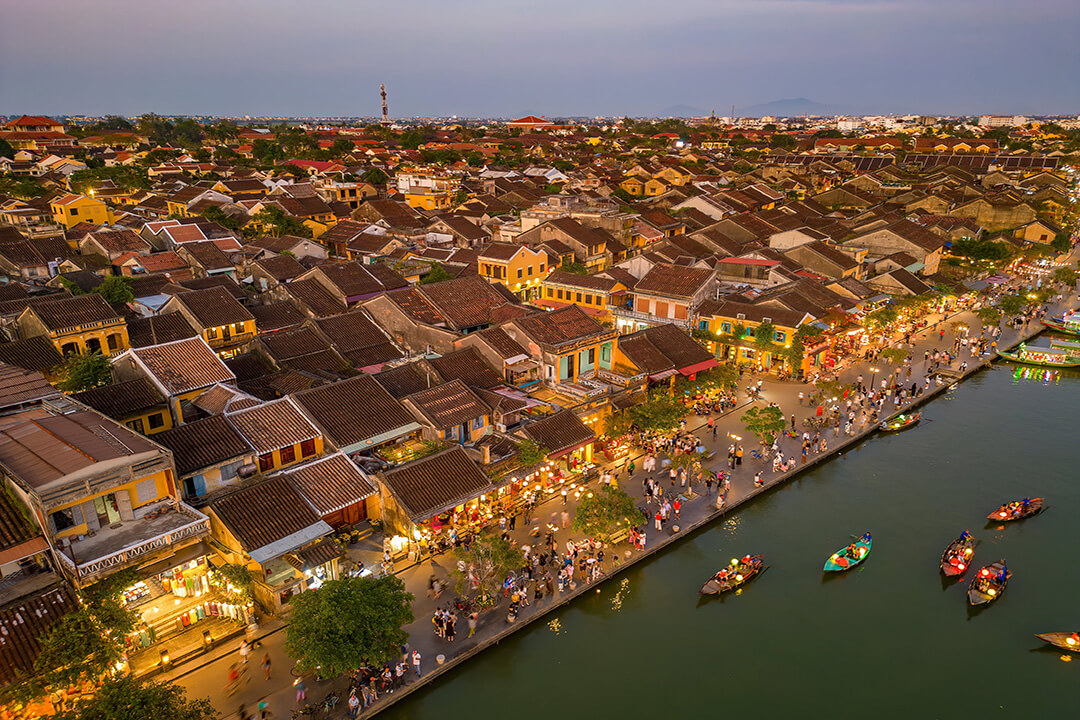
One of the highlights is the iconic Japanese Covered Bridge, a 400-year-old landmark that spans a small river. Cross over the bridge and you’ll find the Phuc Kien Assembly Hall, an exquisite temple complex dedicated to the Chinese sea goddess, Thien Hau. Nearby, the Tan Ky Old House offers a glimpse into the prosperous merchant lifestyle of the 19th century.
Hoi An’s culinary delights
In addition to its rich cultural heritage and picturesque architecture, Hoi An is also renowned for its captivating culinary scene. As you explore the charming streets of the Ancient Town, you’ll be tempted by the tantalizing aromas wafting from the local eateries and street food stalls. No visit to Hoi An is complete without trying the city’s signature dishes, such as the thick, chewy Cao Lau noodles, topped with slices of tender pork, fresh herbs, and a variety of crunchy garnishes.
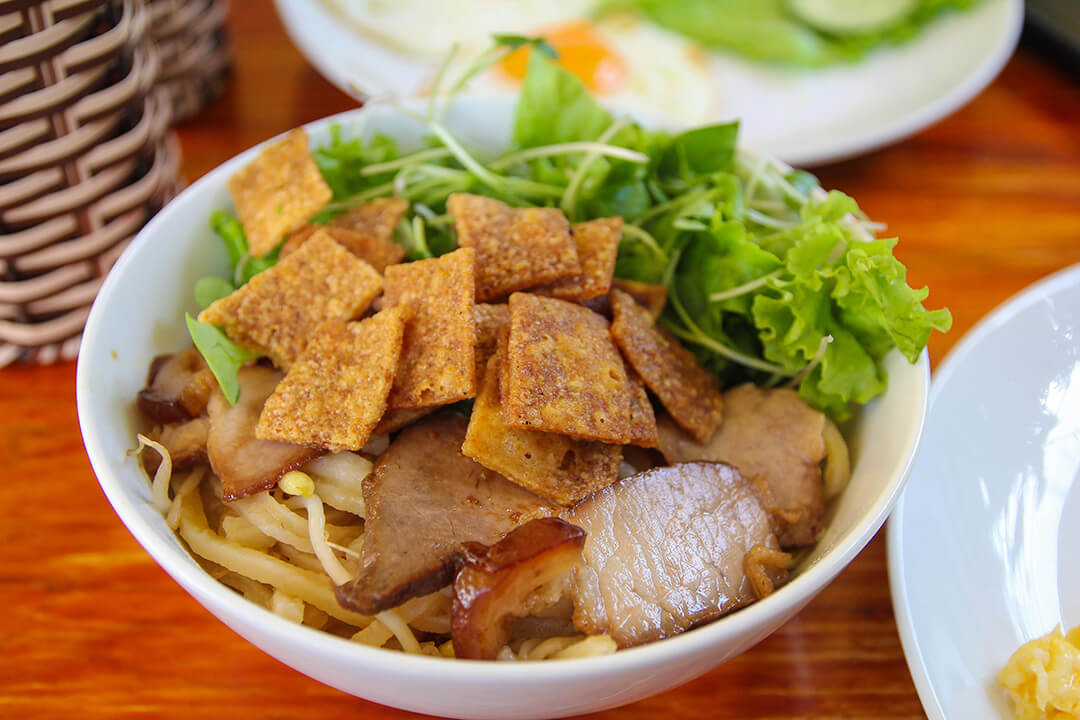
Another local specialty is the delicate White Rose Dumplings, which are made by wrapping shrimp or pork in translucent rice paper, creating a delicate and delicious morsel. Of course, no discussion of Vietnamese cuisine would be complete without mentioning the iconic Banh Mih, and in Hoi An, you can find some of the best examples of this beloved street food, with freshly baked baguettes filled with a variety of savory ingredients.
Hanoi
As the capital city of Vietnam, Hanoi is one of the best areas in Vietnam to visit. This bustling metropolis seamlessly blends ancient traditions with modern developments, offering visitors a unique glimpse into Vietnamese culture.
The heart of Hanoi lies in its Old Quarter, a labyrinth of narrow streets each traditionally dedicated to a specific trade. Here, you can immerse yourself in the local way of life, sample street food delicacies, and shop for traditional crafts. Don’t miss iconic landmarks such as the Temple of Literature, Vietnam’s first national university, and the Ho Chi Minh Mausoleum, where the country’s revered leader rests.

For a taste of Hanoi’s more contemporary side, head to the West Lake area, home to upscale restaurants, cafes, and boutiques. The city is also known for its museums, including the Vietnam Museum of Ethnology and the Vietnam Women’s Museum, which offer deep insights into the country’s diverse cultures and history.
Ho Chi Minh City
Formerly known as Saigon, Ho Chi Minh City (HCMC) is Vietnam’s largest city and its economic powerhouse. This vibrant metropolis offers a stark contrast to the more traditional north, with its modern skyscrapers, bustling markets, and dynamic nightlife.
Begin your exploration in District 1, the city’s central area, where you’ll find many of HCMC’s main attractions. The War Remnants Museum provides a sobering look at the Vietnam War, while the Reunification Palace offers insights into the country’s political history. For a taste of colonial architecture, visit the Notre-Dame Cathedral Basilica of Saigon and the Central Post Office.
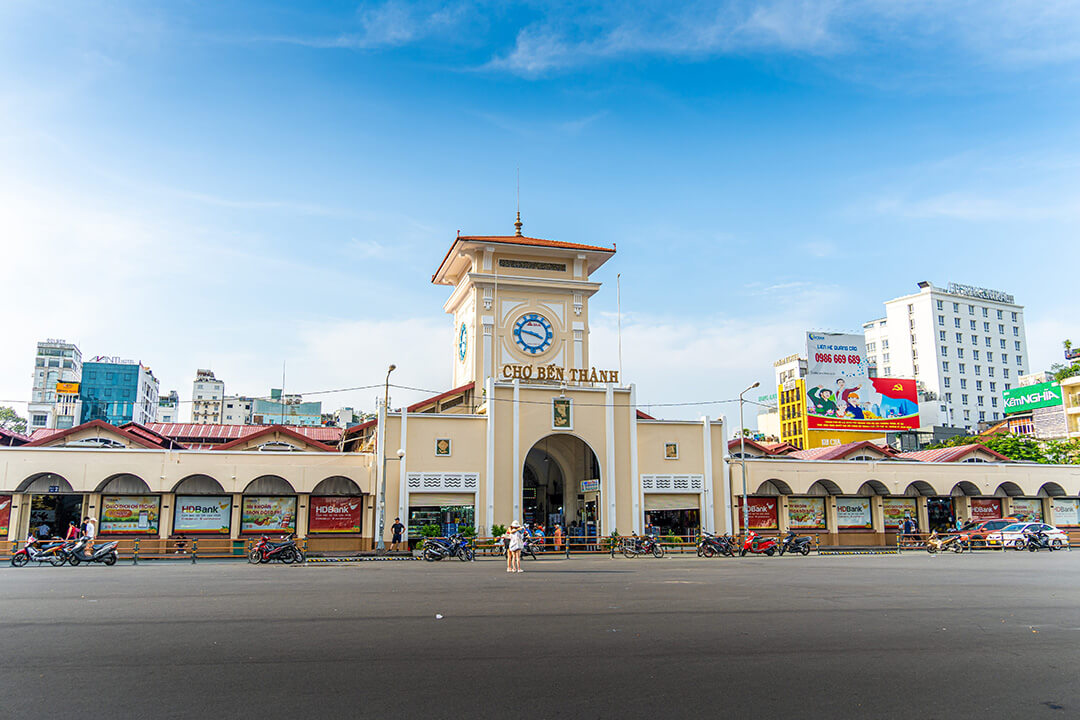
HCMC is also a food lover’s paradise, with an incredible variety of street food and upscale restaurants. Don’t miss the chance to sample a bowl of authentic pho or try the local favorite, banh mi. For a unique experience, take a tour of the Mekong Delta, easily accessible from the city.
Da Nang
Da Nang, located on the central coast of Vietnam, has rapidly transformed into one of the country’s most dynamic cities. Known for its beautiful beaches, modern infrastructure, and proximity to several UNESCO World Heritage sites, Da Nang offers a perfect blend of relaxation and cultural exploration.
The city’s crown jewel is My Khe Beach, a long stretch of pristine white sand. Today, it’s a popular spot for sunbathing, swimming, and water sports. For a unique experience, visit the Golden Bridge on Ba Na Hills, a stunning architectural marvel that appears to be held up by two giant stone hands.
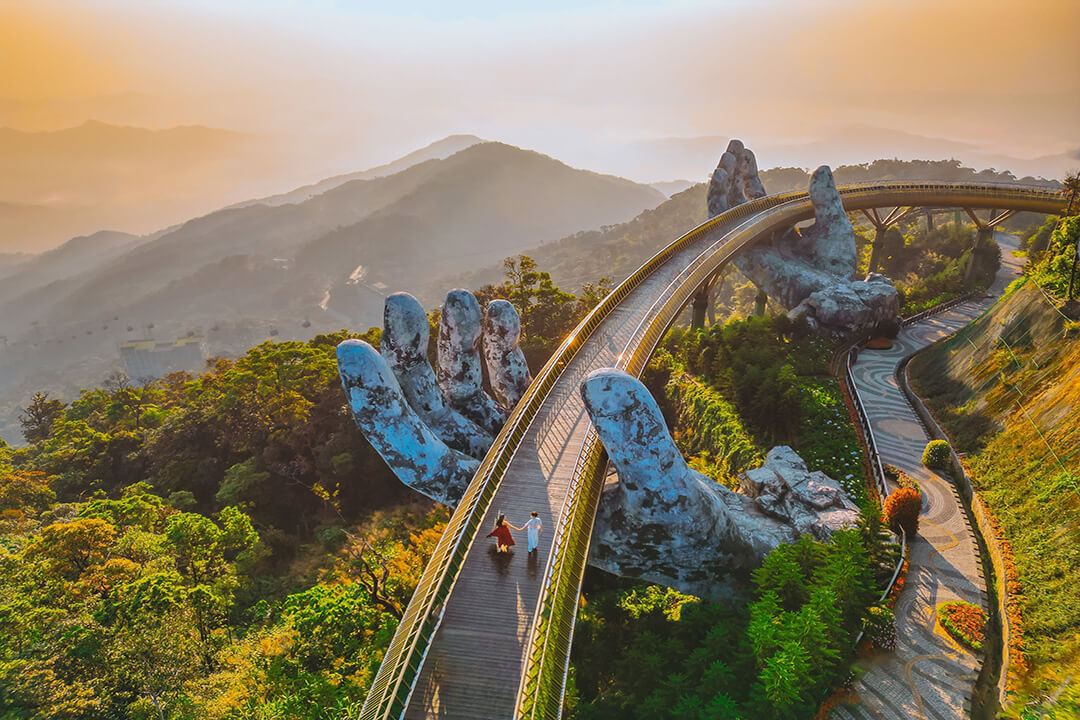
Da Nang is also famous for its bridges, particularly the Dragon Bridge, which breathes fire and water on weekend nights. The Marble Mountains, a cluster of five limestone and marble hills, offer panoramic views of the city and house several Buddhist sanctuaries.
Nha Trang
Nha Trang, a coastal resort city in southern Vietnam, is renowned for its stunning beaches, vibrant nightlife, and excellent scuba diving. This popular destination offers a perfect balance of relaxation and adventure, making it one of the best areas in Vietnam for beach lovers and water sports enthusiasts.
The city’s main beach stretches for several kilometers along a crescent bay, lined with high-rise hotels and seafood restaurants. For a more secluded experience, take a boat trip to the nearby islands, where you can snorkel in crystal-clear waters and lounge on pristine beaches.
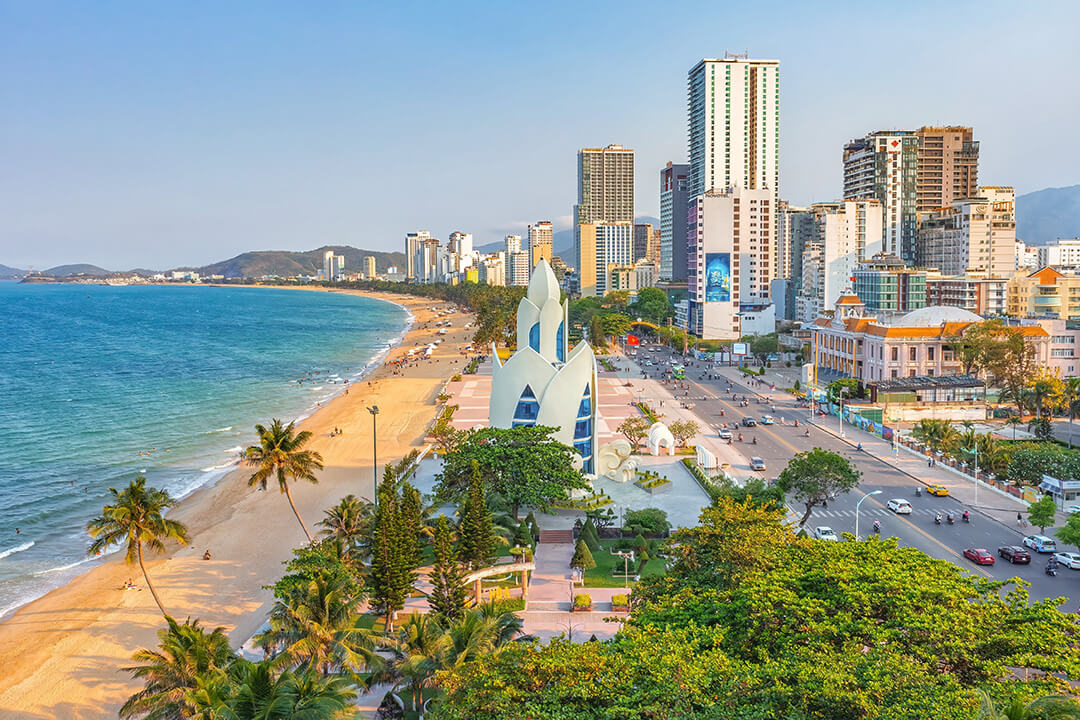
Nha Trang isn’t just about sun and sand, though. The city boasts several cultural attractions, including the Po Nagar Cham Towers, an ancient temple complex built between the 7th and 12th centuries. For a unique wellness experience, visit the Thap Ba Hot Springs Center, where you can enjoy mud baths and mineral springs.
Hue
Hue, the former imperial capital of Vietnam, is a city steeped in history and cultural significance. Located in central Vietnam, Hue offers visitors a glimpse into the country’s royal past and is home to some of the most impressive historical sites in the nation.
The centerpiece of Hue, is the Imperial City, a vast complex of palaces, temples, and gardens enclosed within thick stone walls. This UNESCO World Heritage site was the seat of the Nguyen Dynasty, Vietnam’s last ruling family, and showcases the grandeur of imperial Vietnam. Visitors can spend hours exploring the intricate architecture, ornate decorations, and peaceful courtyards within the citadel.

Another must-visit attraction in Hue is the collection of royal tombs scattered along the Perfume River. Each tomb, built for a different emperor, has its unique style and tells a story of the ruler’s life and reign. The most notable include the tombs of Tu Duc, Minh Mang, and Khai Dinh, each offering a distinct architectural experience.
Phu Quoc
Phu Quoc is a tropical paradise located in the Gulf of Thailand and is Vietnam’s largest island. Known for its pristine beaches, lush forests, and laid-back atmosphere, Phu Quoc has rapidly become one of the best areas in Vietnam for those seeking a beach getaway.
The island boasts over a dozen beaches, each with its own character. Long Beach (Bai Truong) is the most developed, offering a wide range of accommodations and dining options. For a more secluded experience, head to Sao Beach or Dai Beach, where you can enjoy crystal-clear waters and soft white sand in a more tranquil setting.
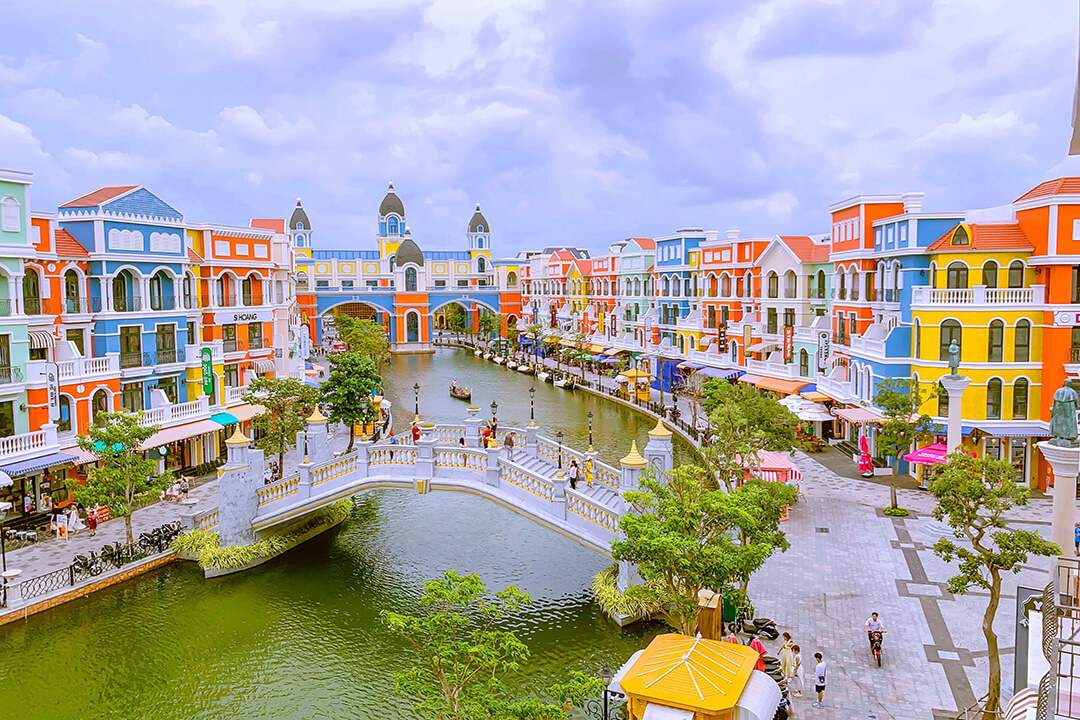
Beyond its beaches, Phu Quoc offers several unique attractions. The Phu Quoc National Park covers more than half of the island and is home to diverse flora and fauna. Nature lovers can trek through the dense jungle or take a guided tour to spot rare wildlife. The island is also famous for its pepper plantations and fish sauce production – both of which can be explored through local tours.
Sapa
Nestled in the Hoang Lien Son Mountains of northwestern Vietnam, Sapa is a picturesque town renowned for its stunning landscapes and rich cultural heritage. This former French hill station offers visitors breathtaking views of terraced rice fields, mist-covered valleys, and the chance to interact with local ethnic minority groups.
Trekking is the primary attraction in Sapa, with numerous trails catering to different fitness levels. The most popular trek leads to the summit of Fansipan, the highest peak in Indochina. For those seeking a less strenuous experience, guided walks through the surrounding villages offer opportunities to meet local H’mong and Red Dao people and learn about their traditional ways of life.
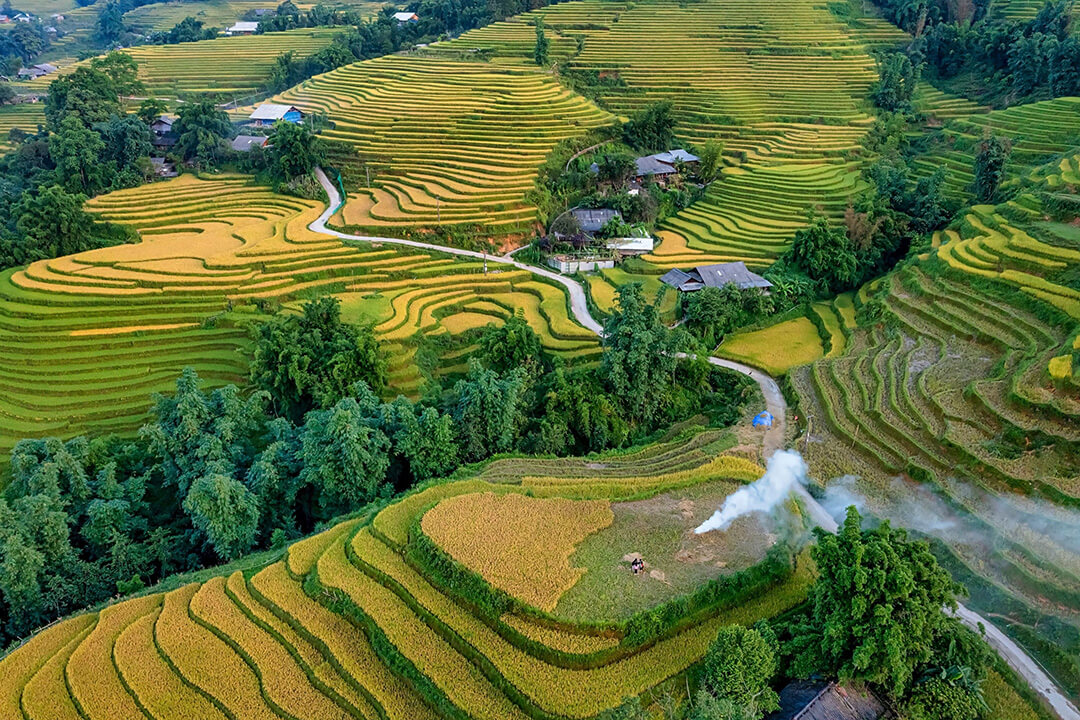
Sapa’s market is another highlight, especially on weekends when ethnic minority groups from surrounding villages come to town to sell their handmade crafts and fresh produce. The colorful traditional attire and lively atmosphere make it a photographer’s paradise.
Mekong Delta
The Mekong Delta, often referred to as Vietnam’s “rice bowl,” is a vast network of distributaries in southwestern Vietnam where the Mekong River approaches and empties into the sea. This fertile region is characterized by its lush landscapes, intricate waterways, and vibrant floating markets.
A visit to the Mekong Delta offers a glimpse into rural Vietnamese life that seems worlds away from the bustling cities. Take a boat tour through the maze of narrow canals, lined with water coconut trees and dotted with traditional stilt houses. Stop at local orchards to taste tropical fruits straight from the tree, or visit cottage industries to see how local specialties like coconut candy and rice paper are made.
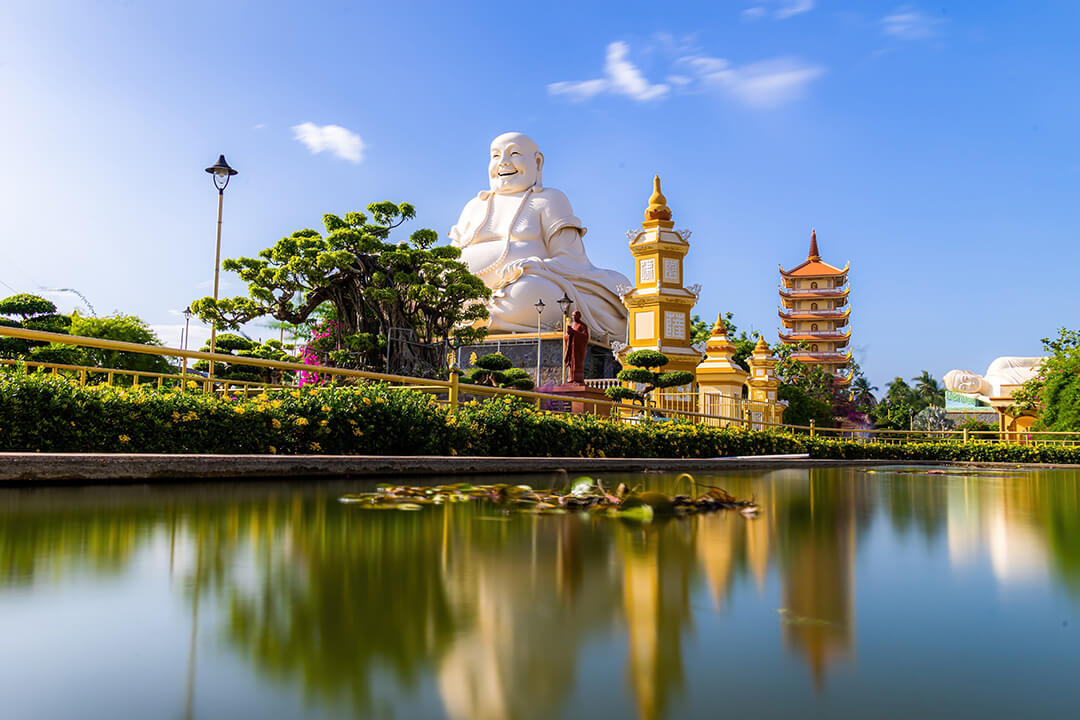
The Vietnam travel tips for visitors to this land of rivers and waterways is to visit during the dry season (December to May) for easier travel. Take an overnight trip to fully experience the region’s charm and visit the floating markets early in the morning. This will allow you to immerse yourself in the captivating destinations, uncover hidden gems, and savor the local charm.
Ninh Binh
Located just a few hours south of Ha Noi, Ninh Binh offers some of Vietnam’s most spectacular landscapes. Often referred to as “Halong Bay on land”, this area is characterized by its limestone karsts jutting out of rice paddies, serene rivers, and ancient temples.
The highlight of Ninh Binh is Tam Coc, where visitors can take a boat ride along the Ngo Dong River, passing through three natural caves and surrounded by towering karst formations and lush rice fields. Nearby, the Bich Dong Pagoda, a three-tiered cave pagoda, offers stunning views of the surrounding countryside.
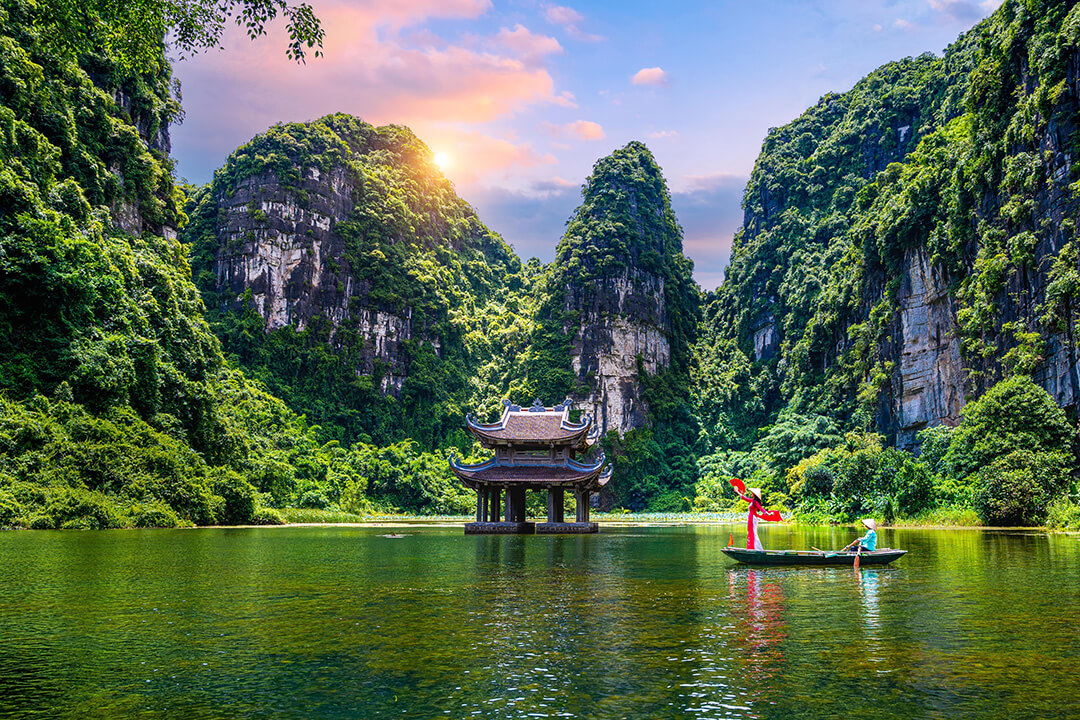
Another must-visit site is the Trang An Scenic Landscape Complex, a UNESCO World Heritage site. This area features a network of waterways weaving through limestone karsts, caves, and valleys. The boat ride here is longer and less crowded than Tam Coc, offering a more peaceful experience.
Halong Bay
Halong Bay, a UNESCO World Heritage site, is undoubtedly one of the best areas in Vietnam and a must-visit destination for any traveler. Located in the Gulf of Tonkin, this breathtaking bay is famous for its emerald waters and thousands of towering limestone islands topped by rainforests.
The best way to experience Halong Bay is through an overnight cruise. As you sail through the bay, you’ll be treated to stunning vistas of dramatic limestone karsts rising from the sea. Many cruises offer activities such as kayaking, exploring hidden caves, and visiting floating fishing villages. The Sung Sot Cave (Surprise Cave) is particularly impressive, featuring enormous chambers filled with stalactites and stalagmites.
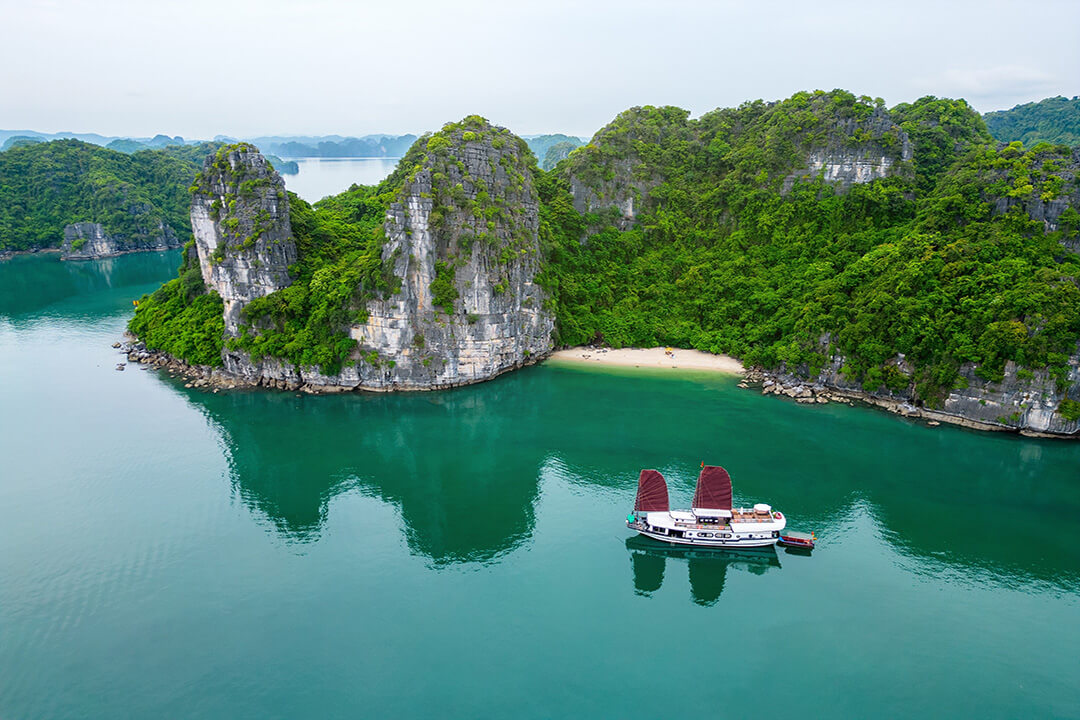
For those seeking a more active adventure, Cat Ba Island, the largest island in Halong Bay, offers excellent hiking and rock climbing opportunities. The island is also home to the endangered Cat Ba langur, making it a great spot for wildlife enthusiasts.
Dalat
Nestled in the Central Highlands of Vietnam, Dalat is a charming mountain resort town known for its cool climate, French colonial architecture, and stunning natural scenery. Often called the “City of Eternal Spring”, Dalat offers a refreshing retreat from the heat of Vietnam’s lowlands.
One of the main attractions in Dalat is its beautiful landscapes. The city is surrounded by pine forests, waterfalls, and lakes. Visit the Valley of Love for romantic views, or take a cable car ride to Truc Lam Pagoda for panoramic vistas of the city and surrounding countryside. The Dalat Flower Gardens showcase the region’s diverse flora, including vibrant hydrangeas and orchids.
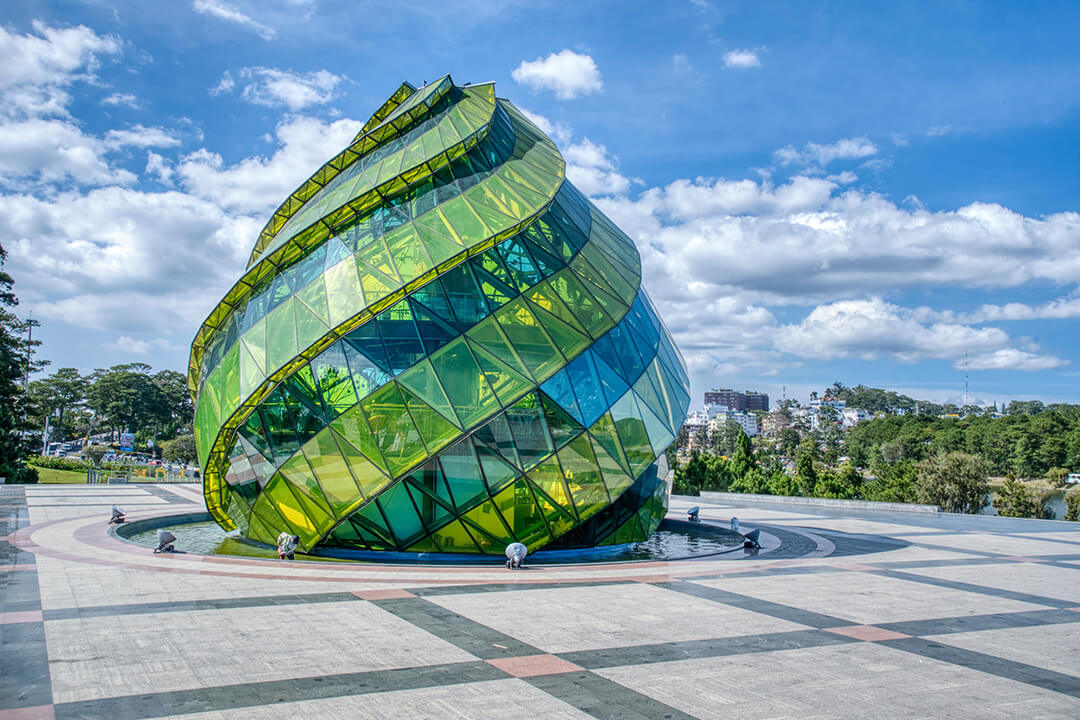
Dalat is also famous for its quirky architecture. The Crazy House, a surreal guesthouse designed by architect Dang Viet Nga, is a must-visit for its fantastical, organic forms. For a taste of colonial history, explore the summer palace of Vietnam’s last emperor, Bao Dai.
Ha Giang
For adventurous travelers seeking off-the-beaten-path experiences, Ha Giang province in northern Vietnam is one of the best areas to explore. Known for its rugged karst plateaus, winding mountain roads, and diverse ethnic minority cultures, Ha Giang offers a glimpse into a Vietnam that feels untouched by time.
The highlight of Ha Giang is the Dong Van Karst Plateau Geopark, a UNESCO-recognized site known for its spectacular limestone formations and deep canyons. The Ma Pi Leng Pass, often called the “King of Vietnam’s passes,” offers breathtaking views of the Nho Que River winding through steep gorges.
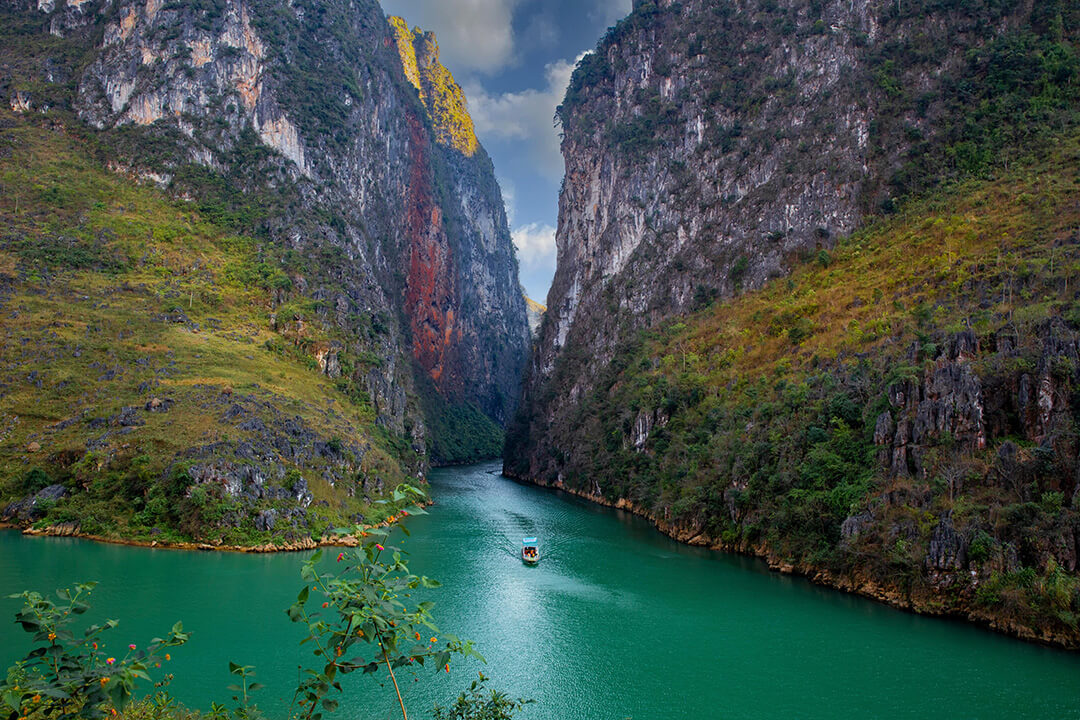
Ha Giang is also home to several ethnic minority groups, including the H’mong, Tay, and Dao. Visiting local markets, such as the Dong Van Sunday Market, provides a colorful and authentic cultural experience. The Lung Cu Flag Tower, marking Vietnam’s northernmost point, is another popular attraction offering panoramic views of the surrounding mountains.
Phong Nha – Ke Bang National Park
Phong Nha – Ke Bang National Park, located in central Vietnam, is a paradise for nature lovers and adventure seekers. This UNESCO World Heritage site is home to some of the world’s largest and most spectacular caves, as well as pristine forests and underground rivers.
The star attraction is Son Doong Cave, the world’s largest cave, which was only discovered in 2009. While access to Son Doong is limited and expensive, there are many other impressive caves to explore. Paradise Cave, with its stunning rock formations, and Phong Nha Cave, which you can explore by boat, are both popular options.
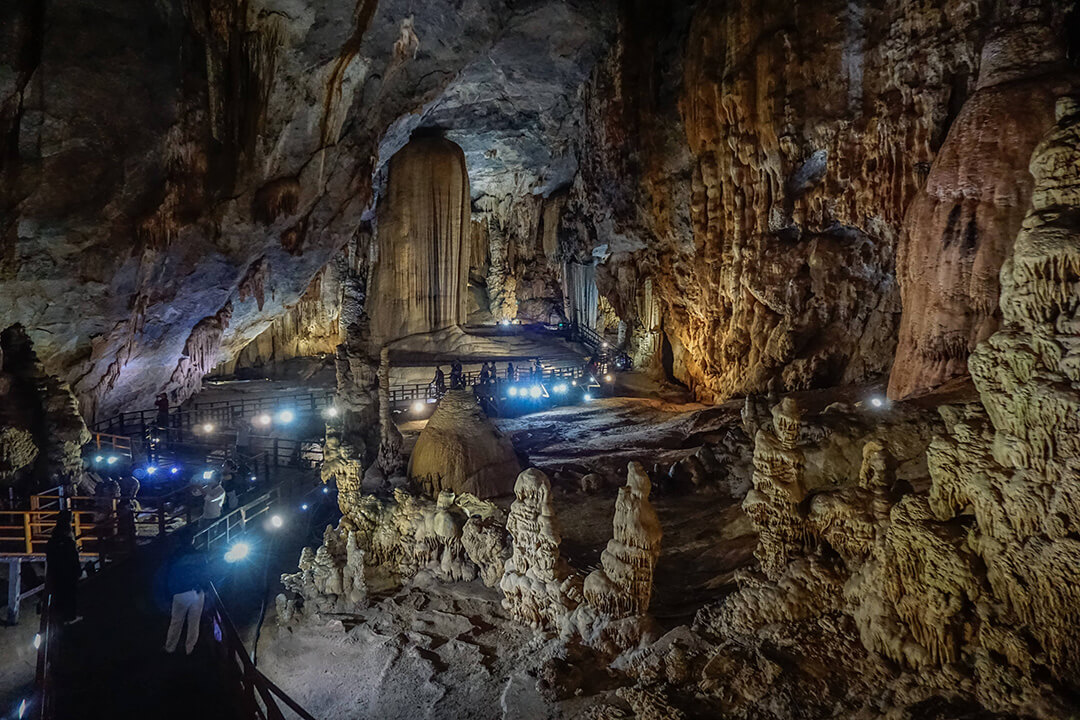
Beyond caving, the park offers excellent opportunities for trekking, wildlife spotting, and learning about the region’s wartime history. The Botanical Garden trail provides a chance to see some of the park’s diverse flora and fauna, while the Eight Ladies Cave tells a poignant story from the Vietnam War.
Mui Ne
Mui Ne, a coastal town in southeastern Vietnam, is known for its stunning beaches, unique sand dunes, and excellent wind conditions for kitesurfing and windsurfing. This laid-back destination offers a perfect mix of relaxation and adventure.
The main attraction in Mui Ne is its long stretch of beach, lined with resorts and seafood restaurants. The strong winds that blow almost year-round have made Mui Ne a popular spot for wind sports, with numerous schools offering lessons for beginners and equipment rental for experienced surfers.
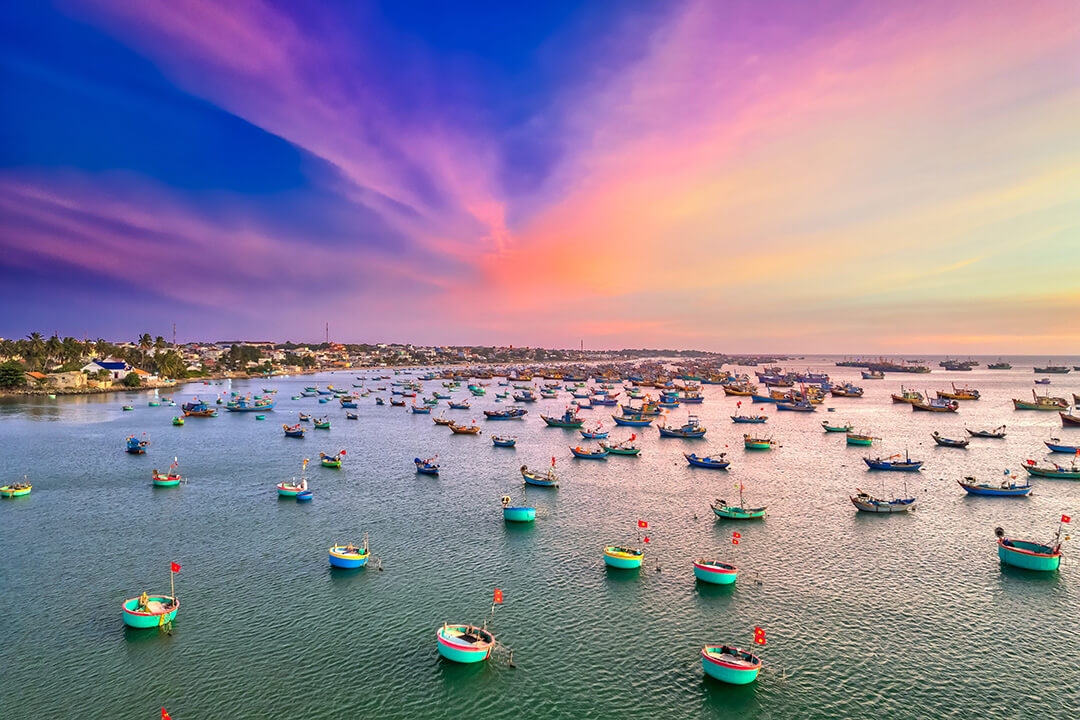
Away from the beach, Mui Ne’s sand dunes are a must-visit attraction. The white sand dunes offer opportunities for sandboarding and ATV rides, while the red sand dunes are perfect for watching the sunset. Other notable sites include the Fairy Stream, a shallow stream running through a canyon of red and white sand formations, and the picturesque Mui Ne Fishing Village.
Cu Chi Tunnels
Located just outside Ho Chi Minh City, the Cu Chi Tunnels offer a fascinating glimpse into Vietnam’s wartime history. This vast network of underground tunnels, stretching over 250 kilometers, played a crucial role in the Vietnam War as a base for Viet Cong operations.
Visitors can explore a small section of the tunnels, getting a sense of the cramped conditions in which soldiers lived and fought. The site also features displays of various booby traps used during the war, as well as examples of the guerrilla warfare tactics employed by the Viet Cong.
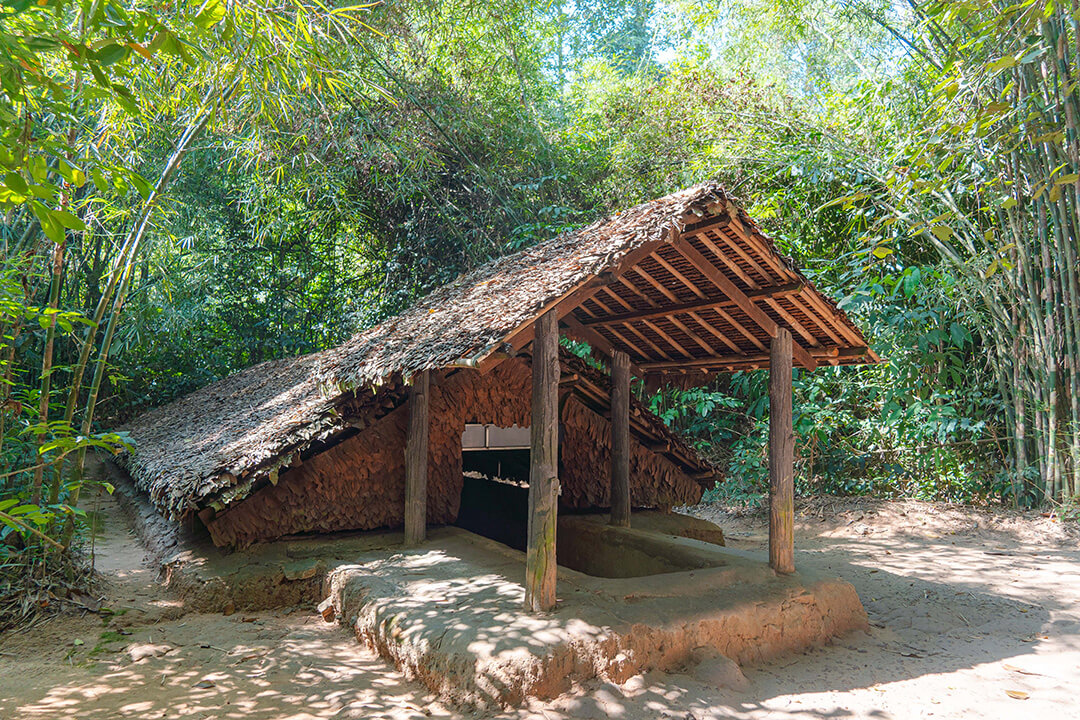
For those interested in military history, the Cu Chi Tunnels provide a sobering and educational experience. Many tours also offer the opportunity to fire weapons at an on-site shooting range, though this is entirely optional.
Con Dao Islands
The Con Dao Islands, an archipelago of 16 islands off the southern coast of Vietnam, offer a perfect blend of history, natural beauty, and tranquility. Once home to notorious prisons during French colonial rule and the Vietnam War, Con Dao has transformed into a peaceful paradise with pristine beaches and diverse marine life.
Con Son, the largest island, is home to several historic sites, including the infamous Con Dao Prison complex. Today, visitors can tour these sites to learn about the island’s dark past. In contrast to this history, Con Dao National Park covers much of the archipelago, protecting rare species both on land and in the surrounding waters.
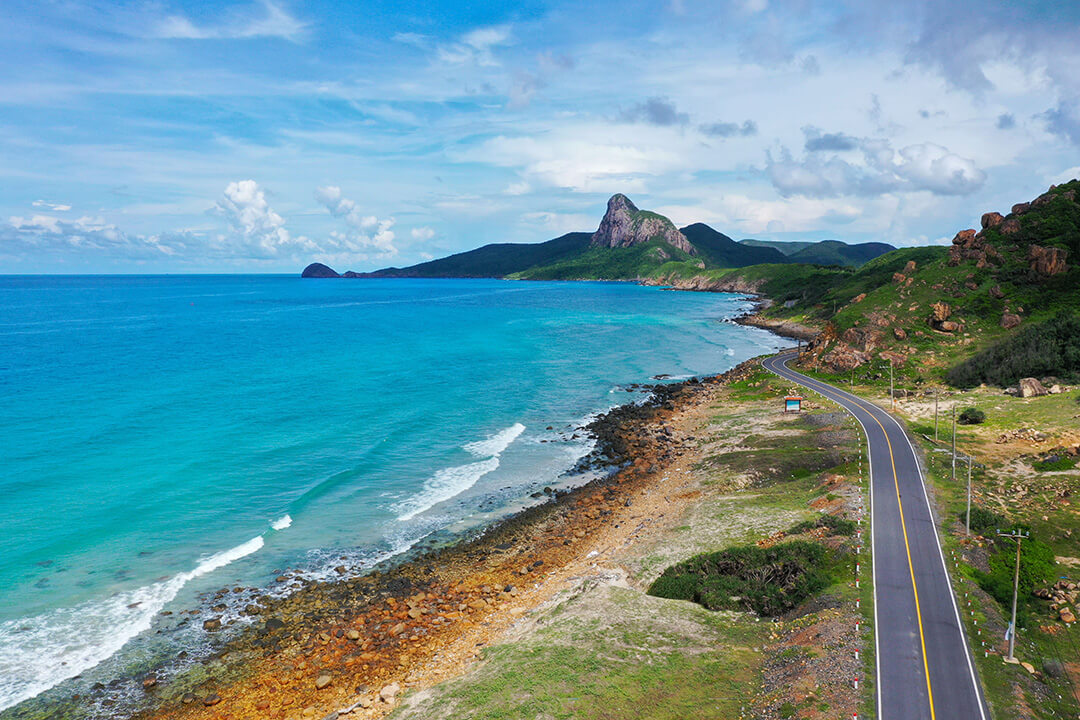
The islands are also known for their beautiful beaches, such as Dam Trau and Bai Nhat. From May to October, you can witness endangered green turtles nesting on the beaches. Snorkeling and diving are popular activities, with the chance to see dugongs, sea turtles, and colorful coral reefs.
Hai Phong
Hai Phong, Vietnam’s third-largest city and a major port, is often overlooked by tourists but offers a unique blend of colonial architecture, bustling markets, and nearby natural attractions. Known as the “City of Flame Flowers” due to the red flamboyant trees that line its streets, Hai Phong is particularly beautiful in early summer when these trees are in bloom.
The city center features well-preserved French colonial buildings, including the Hai Phong Opera House and the Queen of the Rosary Cathedral. Du Hang Pagoda, one of the city’s oldest Buddhist temples, is worth a visit for its intricate wood carvings and peaceful atmosphere.
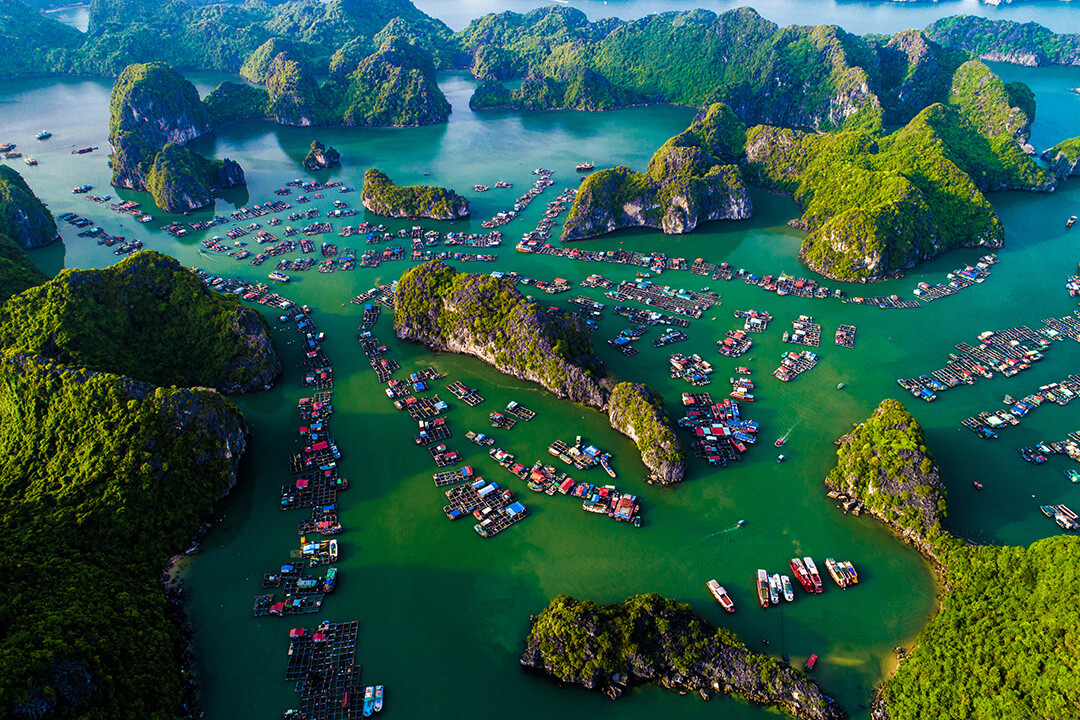
Hai Phong also serves as a gateway to Cat Ba Island and Lan Ha Bay, offering a less crowded alternative to Halong Bay. The nearby Do Son Beach is popular among locals for its golden sand and seafood restaurants.
Hoan Kiem Lake
Located in the heart of Hanoi, Hoan Kiem Lake is not just a geographical landmark but also the soul of the city. The name “Hoan Kiem” means “Lake of the Returned Sword,” referring to a legend involving Emperor Le Loi and a magical sword.
The lake is a focal point of public life in Hanoi. In the early mornings and evenings, locals gather around the lake for exercise, tai chi, and socializing. The iconic red Huc Bridge leads to Ngoc Son Temple, situated on a small island in the lake. This temple, dedicated to national hero Tran Hung Dao, is a beautiful example of traditional Vietnamese architecture.
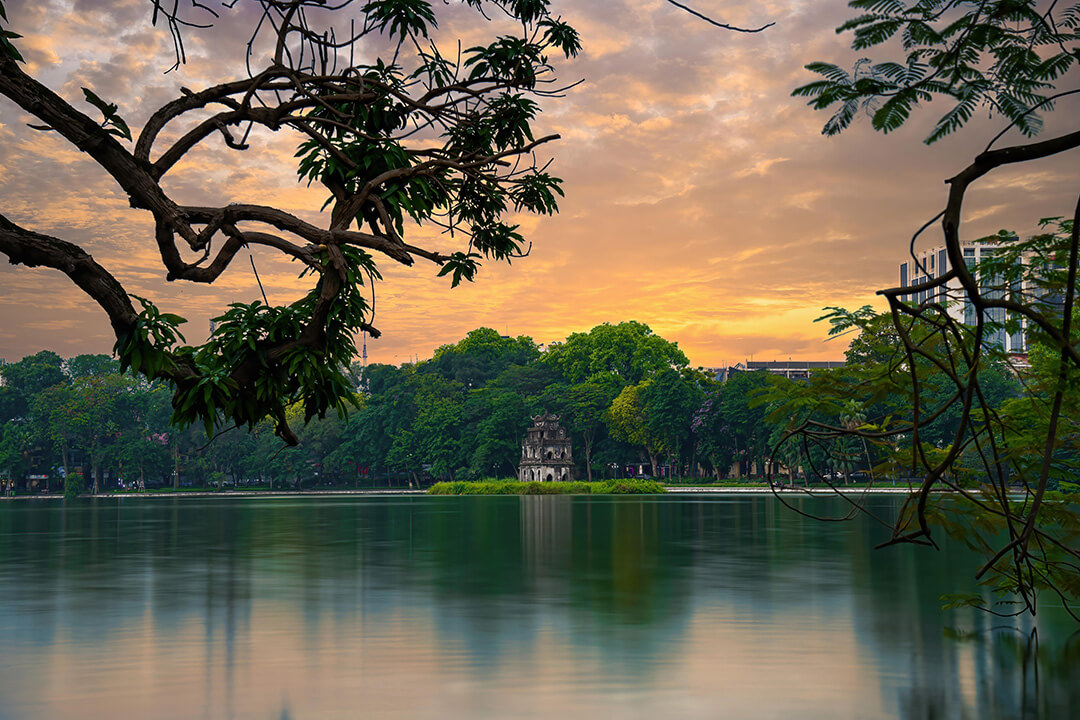
On weekends, the streets around Hoan Kiem Lake are closed to traffic and become a lively pedestrian zone. Street performances, games, and food stalls create a festive atmosphere that’s popular with both locals and tourists.
My Son
My Son Sanctuary, located in central Vietnam near Hoi An, is a remarkable archaeological site featuring the ruins of Hindu temples built between the 4th and 14th centuries by the Champa civilization. This UNESCO World Heritage site offers a unique glimpse into the region’s ancient history and architectural prowess.
The site consists of several groups of temple towers, each built to honor different deities. Although many structures were damaged during the Vietnam War, the remaining ruins still showcase the impressive brickwork and intricate carvings characteristic of Cham architecture.
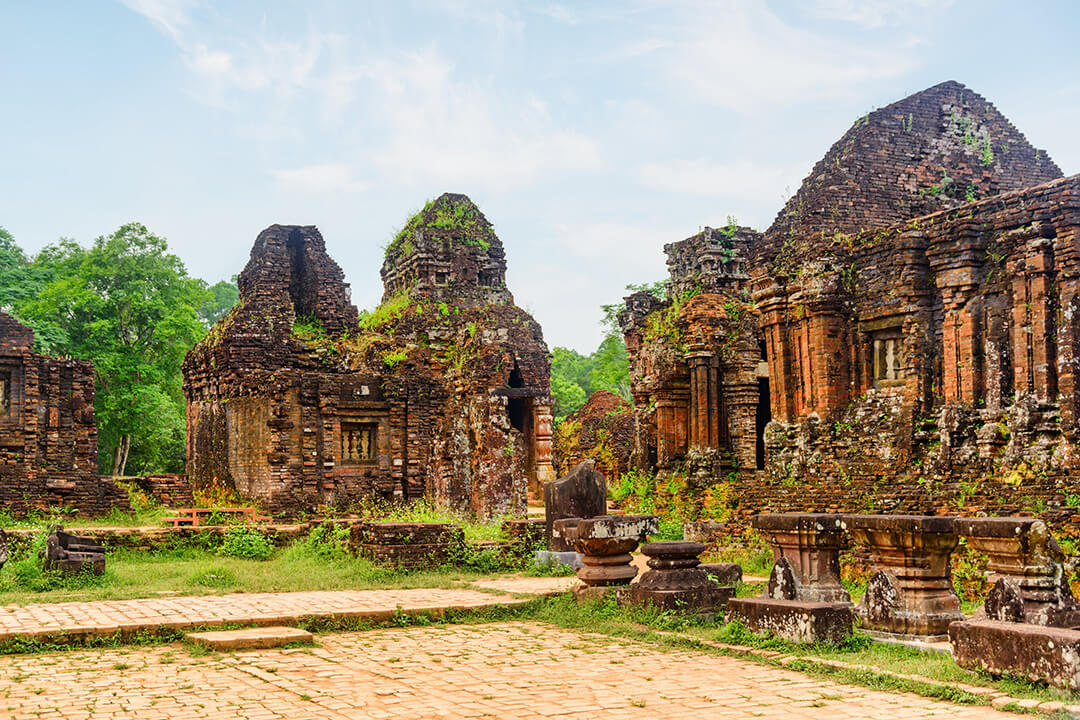
Visiting My Son early in the morning not only helps avoid the heat but also provides magical views as the mist lifts from the lush valley surrounding the ruins. A small museum on-site offers insights into Cham culture and the history of My Son.
Vung Tau
Vung Tau, a coastal city just a few hours from Ho Chi Minh City, is a popular weekend getaway for locals and an increasingly attractive destination for international tourists. Known for its beaches, seafood, and colonial architecture, Vung Tau offers a refreshing escape from the bustling city life.
The city boasts several beaches, with Front Beach (Bai Truoc) and Back Beach (Bai Sau) being the most popular. While Front Beach is more developed and closer to the city center, Back Beach offers cleaner waters and a more relaxed atmosphere. Water sports enthusiasts can enjoy activities like jet-skiing and parasailing.
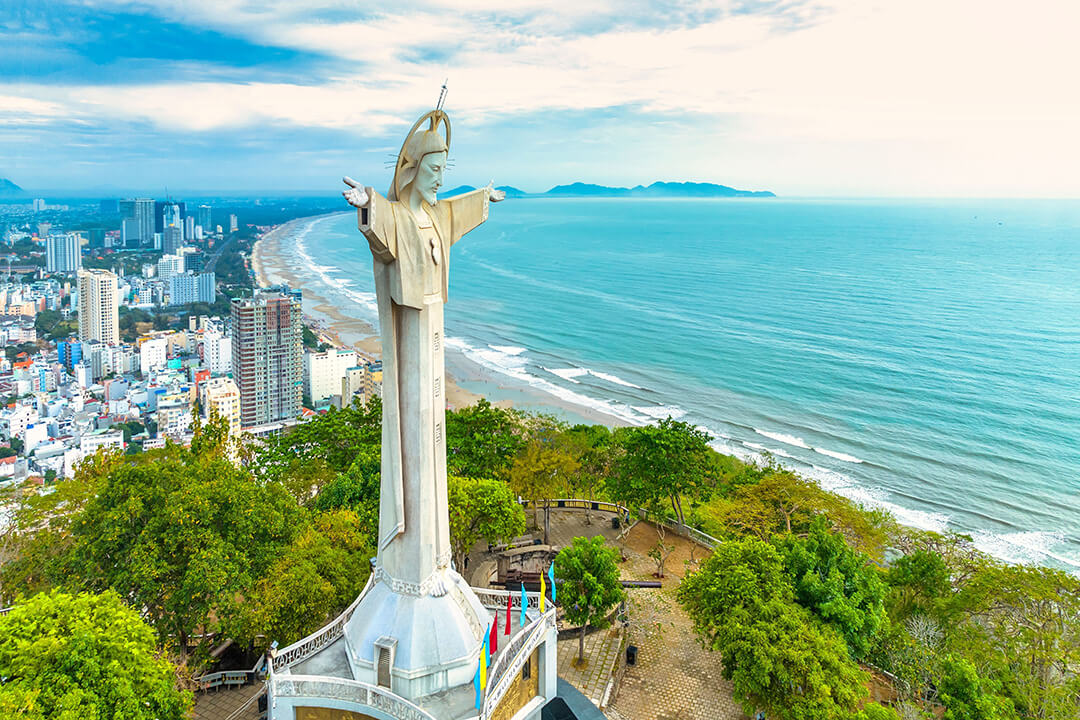
One of the most iconic landmarks of Vung Tau that makes the city one of the “best areas in Vietnam” is the giant Christ the King statue, reminiscent of the statue in Rio de Janeiro. Walking up to the statue offers visitors a panoramic view of the city and the coastline. The nearby lighthouse, built during the French colonial period, is another great spot for city views.
Ba Be National Park
Ba Be National Park, located in the northeastern province of Bac Kan, is a haven for nature lovers and adventure seekers. The park is centered around Ba Be Lake, the largest natural freshwater lake in Vietnam, surrounded by limestone karsts, waterfalls, and dense forests.
A boat trip on Ba Be Lake is a must-do activity, offering stunning views of the surrounding landscape and opportunities to spot wildlife. The lake is home to over 100 species of freshwater fish, and the surrounding forests harbor a diverse range of flora and fauna, including langur monkeys and over 200 bird species.
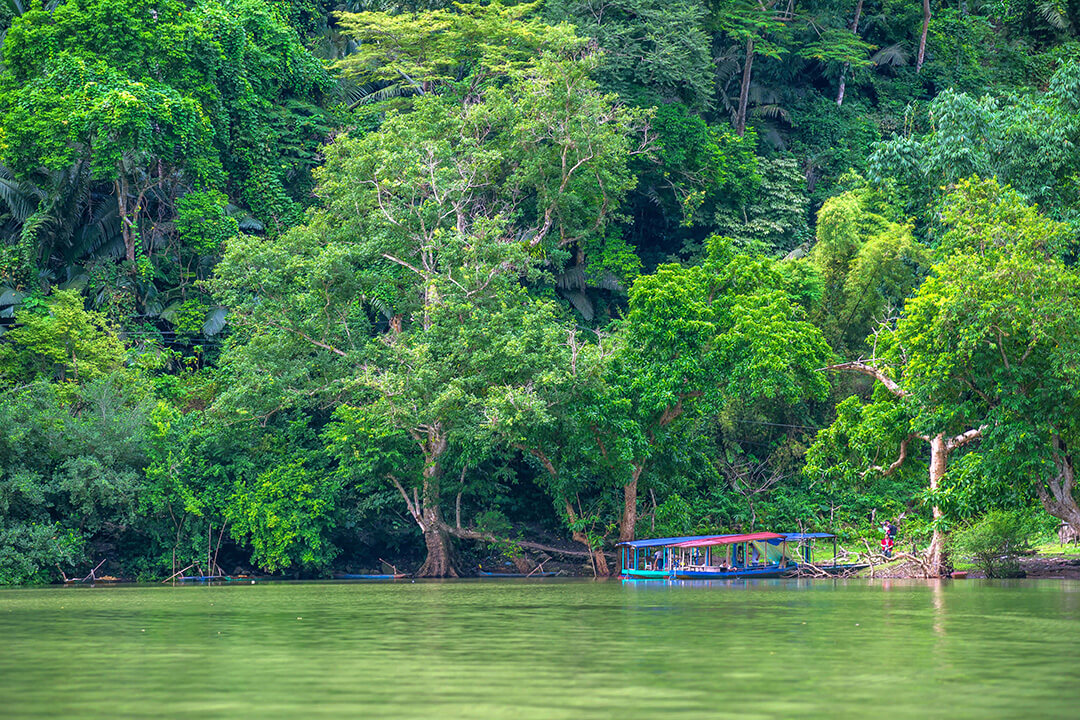
Visitors can also explore the park’s numerous caves, with Puong Cave being the most impressive. This 300-meter-long cave, home to thousands of bats, can be explored by boat. For those seeking more active pursuits, the park offers excellent trekking opportunities through ethnic minority villages and lush forests.
Vietnam’s tapestry is woven with vibrant cities, pristine beaches, captivating historical sites, and breathtaking natural landscapes. As you plan your journey through these best areas in Vietnam, remember to read the Vietnam travel tips, these insights will help you navigate the country more smoothly, respect local customs, and make the most of your experiences in each destination.
Some question about best areas in Vietnam
Q: What is the richest area in Vietnam?
A: Ho Chi Minh City (HCMC) also know as Saigon is Vietnam’s Economic Locomotive and here is also the richest area in Vietnam.
Q: What is the most beautiful part of Vietnam?
A: Ha Long Bay, Hoi An, Hanoi, Sapa are the 4 most beautiful places in Vietnam that you should visit during your trip to this country. Among them, Ha Long Bay is the place considered the most beautiful in Vietnam.
Q: What is the coolest areas of Vietnam?
A: Sapa is the coolest area of Vietnam. The lowest temperature recorded in Sapa is -4.2 degrees Celsius (in early 2016).


